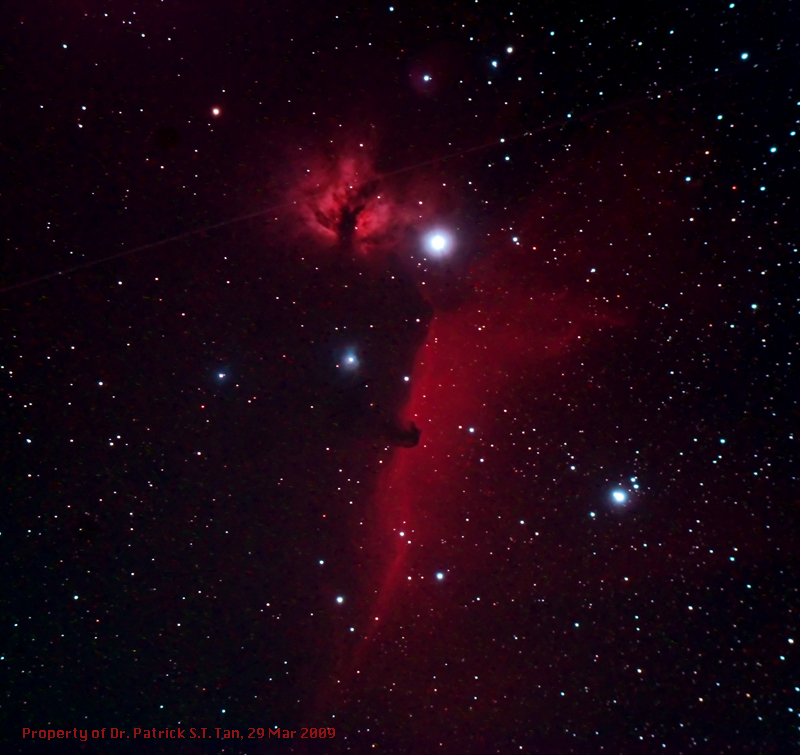
Zeta Orionis: Alnitak
IC 434, B33, NGC 2024, NGC 2023
Date: 29/03/09 Time: 2100hrs Location: Sunningwell Temperature: 5.7ēC Relative Humidity: 51%
Camera: Nikon D80 Scope: William Optics Z66 Apo Doublet at prime focus Mount: piggy-backed on Meade LX90 in equatorial mode Filter: Astronomik CLS (LPF broadband filter) Exposures: 4x600 seconds ISO: 1600 F ratio: 5.9 Guidance: Autoguided
There was a crescent moon to the west but thankfully, no Tilsley Park lights because it was Sunday. This picture is all about the bright blue star just above the centre - ζ Orionis, or by its old Arabic name: Alnitak. It is the leftmost star of Orion's belt. Around it are a profusion of interesting deep sky objects: to the left is NGC 2024 - the Flame nebula, below it is the energised cloud of molecular hydrogen IC 434, fluorescing as a result of the radiation from the star. Within IC 434, some dark dust has formed the silhouette of what our human brains tell us is a horse's head, Barnard 33. Then to the left and above the horse's head, is a blue reflection nebula NGC 2023, which like the Pleiades, is merely gas reflecting the intense light from a star within the gas cloud, HD 37903. The gas cloud extends into IC 434 to form the horse head. All this lies within our galaxy in the next arm along from ours, 1,500 light-years away.
If you're familiar with my early pictures, you will see a similarity in this picture in the form of the slight over-digitisation of the texture as a result of having to 'over-stretch' the dynamic range of the photograph. This was due to the poor transparency and the amount of light pollution in the atmosphere, compounded by the fact that it is extremely late in the season to be photographing in Orion. It was barely 30° in elevation above the horizon when I took this picture. You will also have seen the smear of an aircraft flying across the Flame nebula. (I removed the chain of red pearls left behind by the flashing port wing tip light in Photoshop) 4 x 10 minute exposures were stacked using Maxim DL after individual dark subtraction and noise reduction. The dynamic range was stretched between dark and white points as before, with midtone enhancement which causes the coarse digitisation effect. Finally, a single pass of Noise Ninja at the default settings.
HOME PICTURES: Solar system PICTURES: Wide field